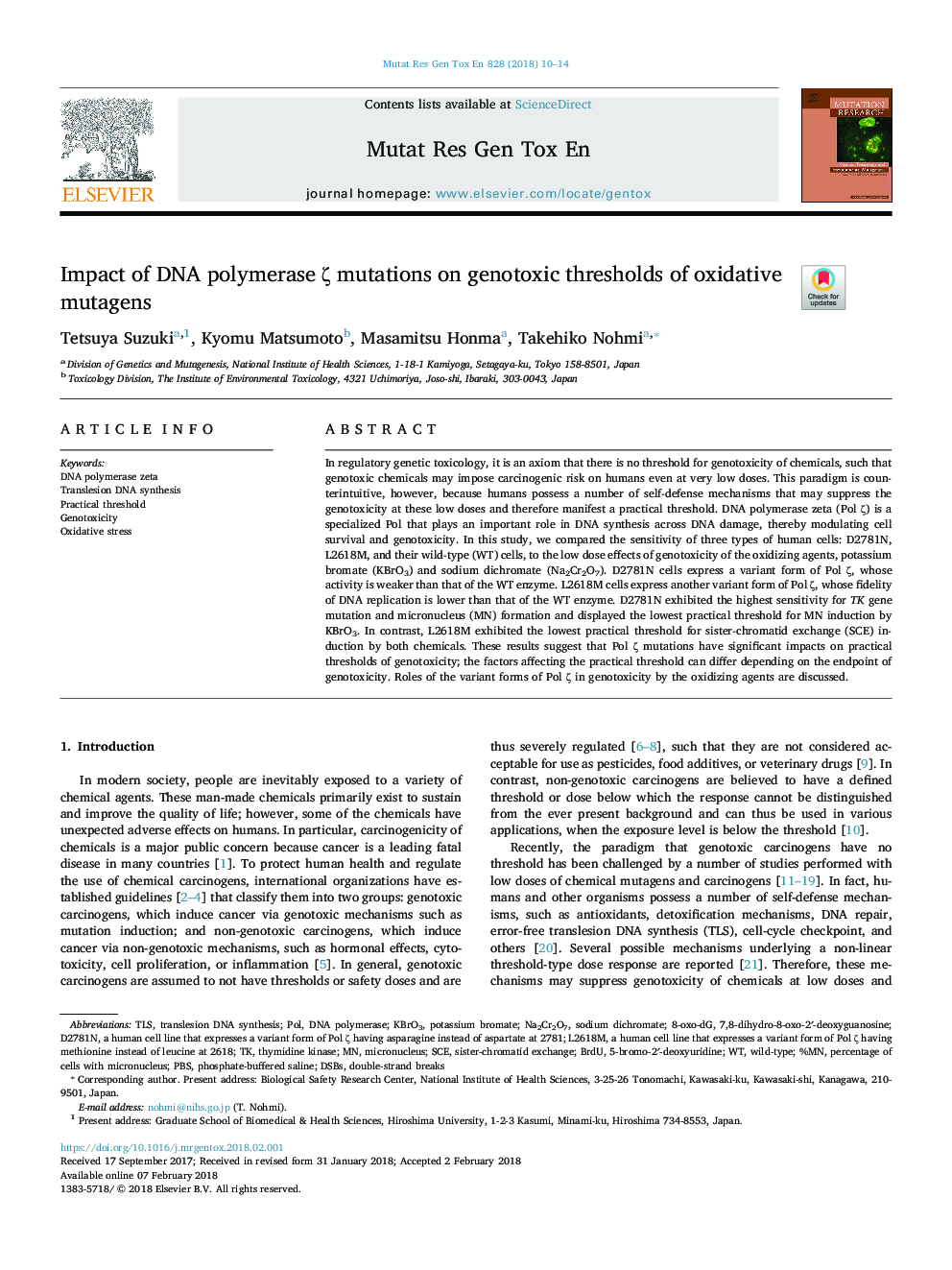| Article ID | Journal | Published Year | Pages | File Type |
|---|---|---|---|---|
| 8456212 | Mutation Research/Genetic Toxicology and Environmental Mutagenesis | 2018 | 5 Pages |
Abstract
In regulatory genetic toxicology, it is an axiom that there is no threshold for genotoxicity of chemicals, such that genotoxic chemicals may impose carcinogenic risk on humans even at very low doses. This paradigm is counterintuitive, however, because humans possess a number of self-defense mechanisms that may suppress the genotoxicity at these low doses and therefore manifest a practical threshold. DNA polymerase zeta (Pol ζ) is a specialized Pol that plays an important role in DNA synthesis across DNA damage, thereby modulating cell survival and genotoxicity. In this study, we compared the sensitivity of three types of human cells: D2781N, L2618M, and their wild-type (WT) cells, to the low dose effects of genotoxicity of the oxidizing agents, potassium bromate (KBrO3) and sodium dichromate (Na2Cr2O7). D2781N cells express a variant form of Pol ζ, whose activity is weaker than that of the WT enzyme. L2618M cells express another variant form of Pol ζ, whose fidelity of DNA replication is lower than that of the WT enzyme. D2781N exhibited the highest sensitivity for TK gene mutation and micronucleus (MN) formation and displayed the lowest practical threshold for MN induction by KBrO3. In contrast, L2618M exhibited the lowest practical threshold for sister-chromatid exchange (SCE) induction by both chemicals. These results suggest that Pol ζ mutations have significant impacts on practical thresholds of genotoxicity; the factors affecting the practical threshold can differ depending on the endpoint of genotoxicity. Roles of the variant forms of Pol ζ in genotoxicity by the oxidizing agents are discussed.
Keywords
Related Topics
Life Sciences
Biochemistry, Genetics and Molecular Biology
Cancer Research
Authors
Tetsuya Suzuki, Kyomu Matsumoto, Masamitsu Honma, Takehiko Nohmi,
